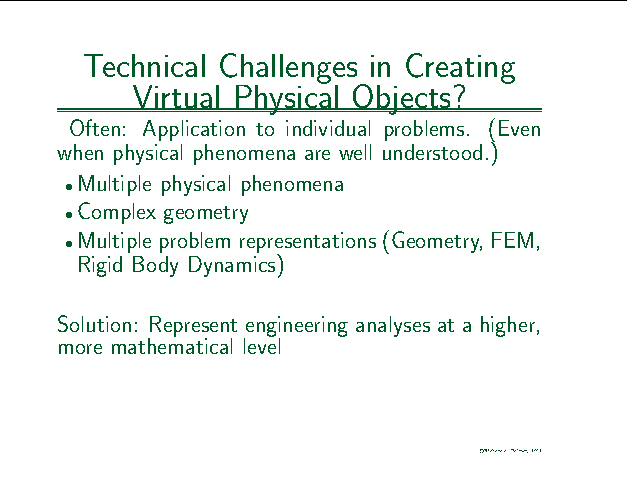
What are the technical challenges presented by this vision of computer models - bits - that can be mixed and matched with real physical object to predict physical behavior?
Perhaps surprisingly, often it is not the lack of good mathematical models - in the abstract. Rather, the problem is often that of how to apply known mathematical models to individual problem instances.
This is especially true when the model must include multiple physical phenomena, such as rigid body dynamics with heat transfer or fluid flow, or when the physical phenomena occur in complex geometric regions.
A related problem is that of multiple, often incompatible, problem representations. This makes it difficult to use analysis tools together.
There's an anecdote that illustrates the issues here pretty well. It seems that Ford finds it more cost effective to perform crash testing on real cars than to use computer modeling. The reason is not so much that the computer simulations are costly to execute - they have supercomputers for that - as it is that it takes an enormous amount of time to set up a simulation accurate enough to make reasonable predictions about the behavior. Again, the problem is probably not the lack of good mathematical models of the behavior of the components of the car, but the fact that these models must be applied to the problem at hand manually.
We see the solution as bringing the computer into the design process much earlier.
By incorporating the earlier, more abstract aspects of modeling into the computing environment, we enable computation on the physics models themselves, and their application to complex systems, instead of requiring that this application be manually, which means slow and expensive.